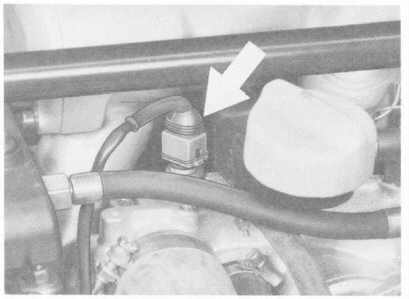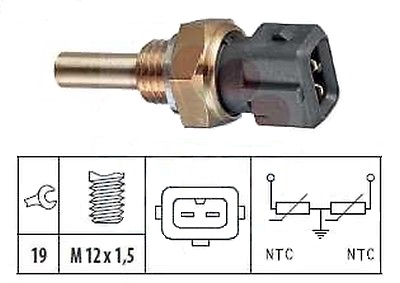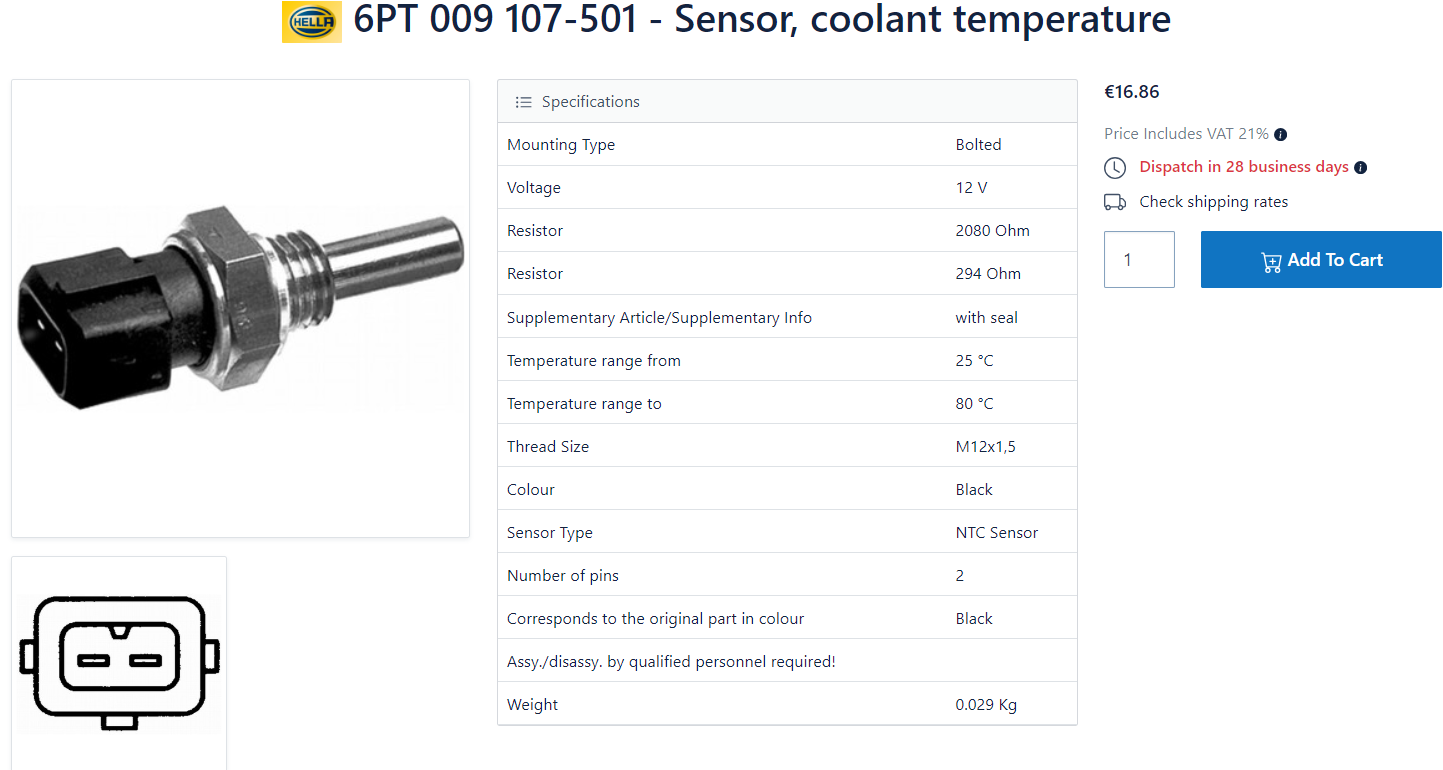

this applies to the TempII sensor of the 928S4 engine. Prior models are different!


Randy,
sounds like a faulty engine temp sensor (NTC II) or (most likely) just a
bad contact to the sensor.
To check it do the following:
pull the connectors from both the EZK and the LH brains in the pass
footwell.
Measure the resistance between PIN 19 and 18 of the LH connector.
With the engine cold the resistance should be a couple of kOhms, with the
engine warmed up it should be between 200 and 300 Ohms.
While measuring have someone else wiggle the connector of the temp sensor.
If the reading is not constant you have a bad connection there and you need
to replace the connector (standard Bosch item)
If the resistance figures are wrong, you need a new sensor. Costs about 30
bucks.
With a faulty sensor you still can drive the car: just disconnect the
sensor. The brains notice that the connector is off and use a
pre-programmed warm-up time to adjust the mixture upon start-up. Starting
might be a bit harder but once warmed up, the mixture will be correct.
Good luck
Kurt
90S4 Auto
=================
Hi John
I haven't seen any response to your questions so far so I'll try to answer them:
The engine has the following temp sensors/switches : NTC II measuring engine temp (=water temp) , the sender for the temp gauge in the dash and the coolant temp sensor in the radiator which controls the fans and louvres and finally the air temperature switch in the intake manifold which (among others) causes the fans to keep running when the engine is shut off.
Only the NTC II is used for the engine management. NTC stands for Negative Temperature Coefficient, which means that the resistance drops with higher temperature.
The brain uses the input from NTC II to enrich the mixture under cold start
conditions and for the ignition timing the engine temp is also factored in.
The NTC II sensor is located where the left hand side cooling water hose
enters the block. Since both LH- and EZK brains want to know about the
engine temp, there are two sensors integrated in the same housing. Both
work in the same way: Typical values: engine cold (around room temp) : 2-3
kOhms, engine hot: 200-300 Ohms. Resistance measured between the contact
and ground as each contact pin goes to one temp sensor.
Don't mix the NTC II up with the water temp sender for the gauge, they look
almost the same but the gauge sender is located on the left hand side.
If NTC II doesn't work (shorted or open loop), the brains disregard the
signal und act as if the car would be warmed up. Thus you should see
problems during cold start. The worst thing that can happen is a bad
connection to the sensor ( as happened to me some time ago). With an
additional resistance due to bad contacts, the brains think the engine is
cold and pump in additional fuel causing the engine to run rich - with the
usual consequences.
The name NTC II implies that there is a NTC I as well - this was a necessary feature for K and L jets, which used vanes or plates to determine the air flow. The temperature was needed to calculate the air mass. In the LH jets the air mass sensors have an integrated air temp measurement circuit, so the LH doesn't need the additional NTC I.
Thus, the air temp switch in the intake manifold is not NTC I but only a switch which is used for the cooling flap/fan control unit.
The switch closes with rising temperature at 87 degrees C and (with falling temp) opens again at 82.7 degrees C. If the switch closes after the engine has shut down, the cooling fans run at 50% power.
The coolant temp sensor also has a NTC characteristic, the resistance
varies between 4kOhm at 60 degrees C 1 kOhm at 100 degree C. If this
doesn't work correctly, your fans and louvres won't operate correctly:
either running permanently or at not at all - with the obvious
consequences
Hope that helps
Kurt
90 S4 Auto
===========
Hi,
Standing in front of the engine, you see 3 sensors:
1. a copper colored sensor on top of the intake: the intake air-temp sensor that controls the fan for additional cooling even when the engine is shut off
2. just left from the water hose a blue looking sensor with a connector on top of it: the NTC II sensor, basically two NTC sensors, both providing a 300 ohms to ground when hot. One lead entering the EZK, the other one is entering the LH to provide engine temperature information.
3. right of the water hose a copper colored sensor with two
spades on top, a bigger and a smaller one: the water temp
sensor for the dash gauge. It should read 60 ohms to ground
when hot (temp. level information), the other one is open
(signals the over temp condition, and is basically a switch (??))
Theo
Temperature - Resistance values for the Temp II Sensor:
0 deg C - 4.4 - 6.8 kOhms
15 to 30 deg C - 1.4 - 3.6 kOhms
40 deg C - 0.9 - 1.3 kOhms
60 deg C - 480 - 720 Ohms
80 deg C - 250 - 390 Ohms
check on LH ecu connector at pins 13 and 5 (or 17) and EZH ecu at pins 18 and 19.
Temp test results for 0 280 130 032:
25*C = 2135 ohms
30*C = 1735 ohms
40*C = 1225 ohms
50*C = 829 ohms
60*C = 649 ohms
70*C = 477 ohms
80*C = 394 ohms
90*C = 298 ohms
100*C = 219 ohms
Theo
1992 928GTS
=====
This is the tem2 sensor replacement from Hella:
